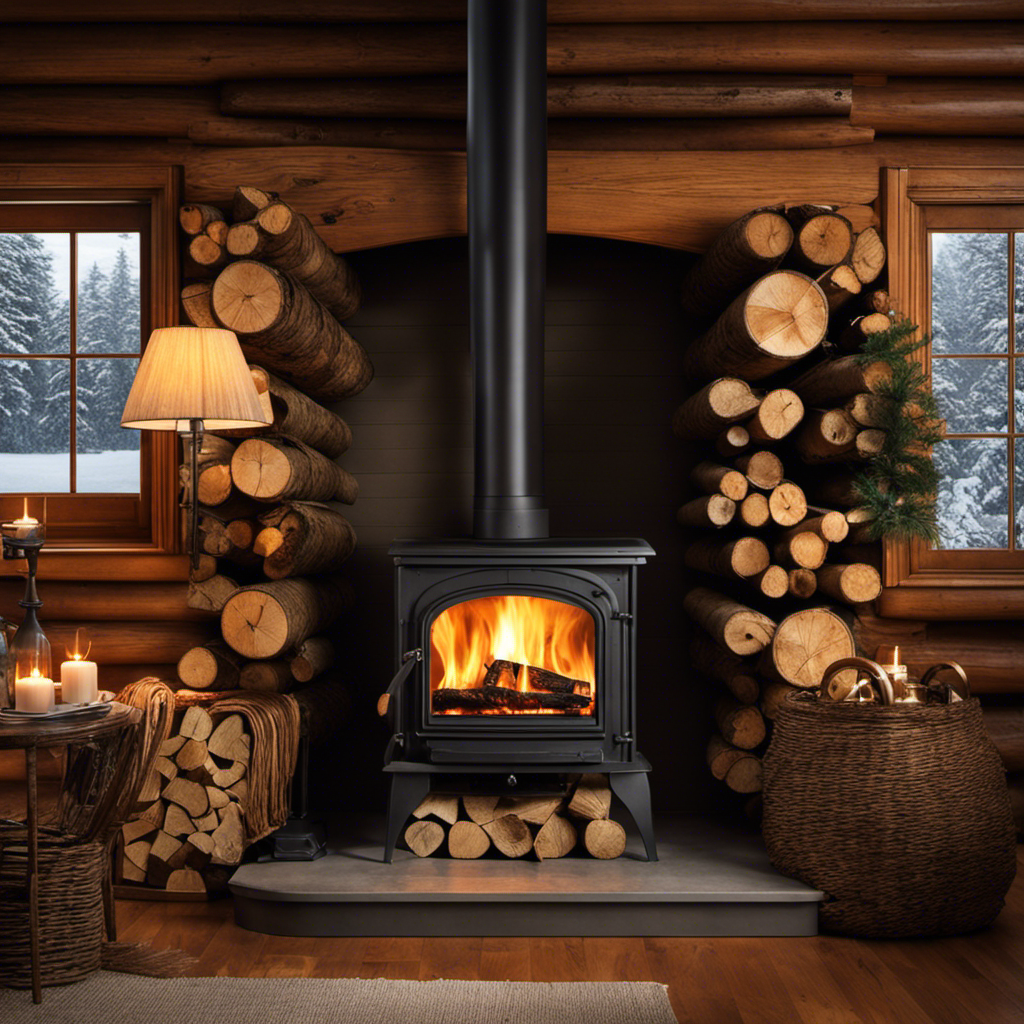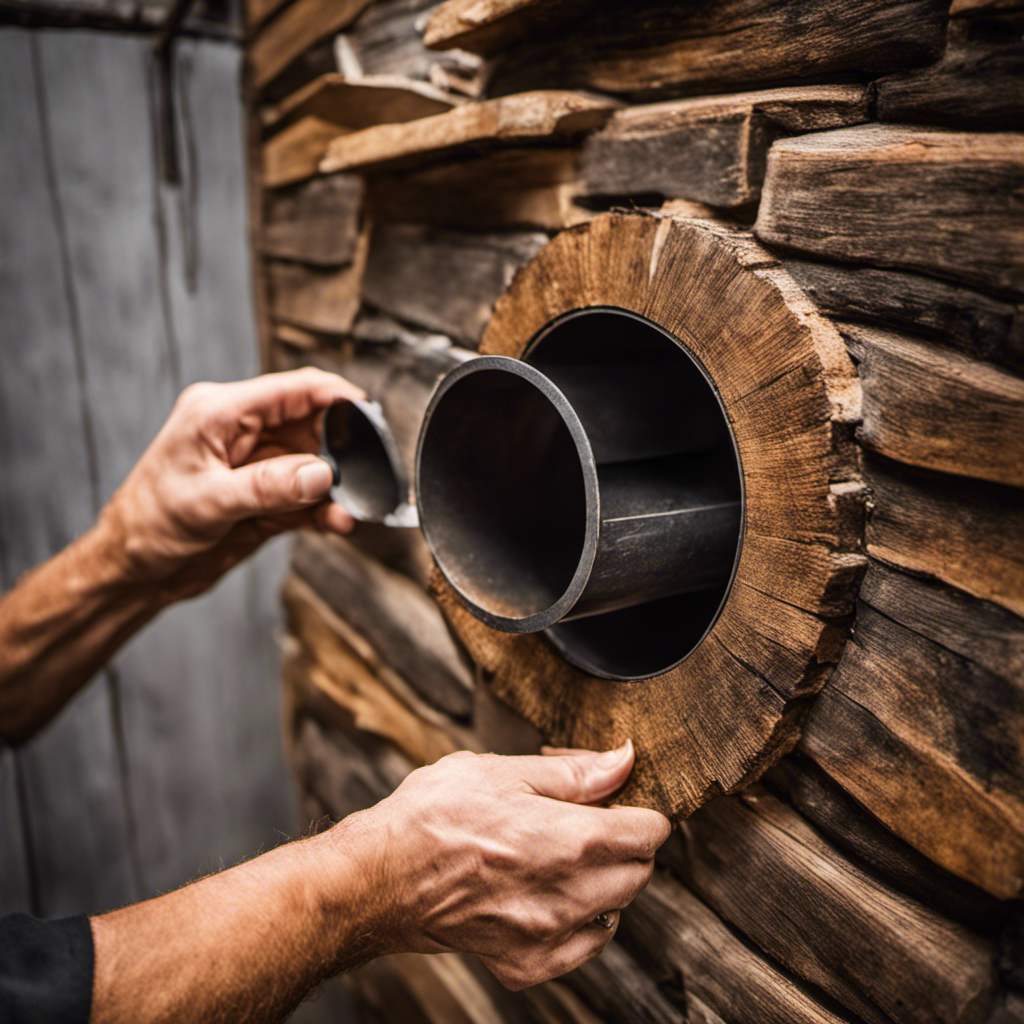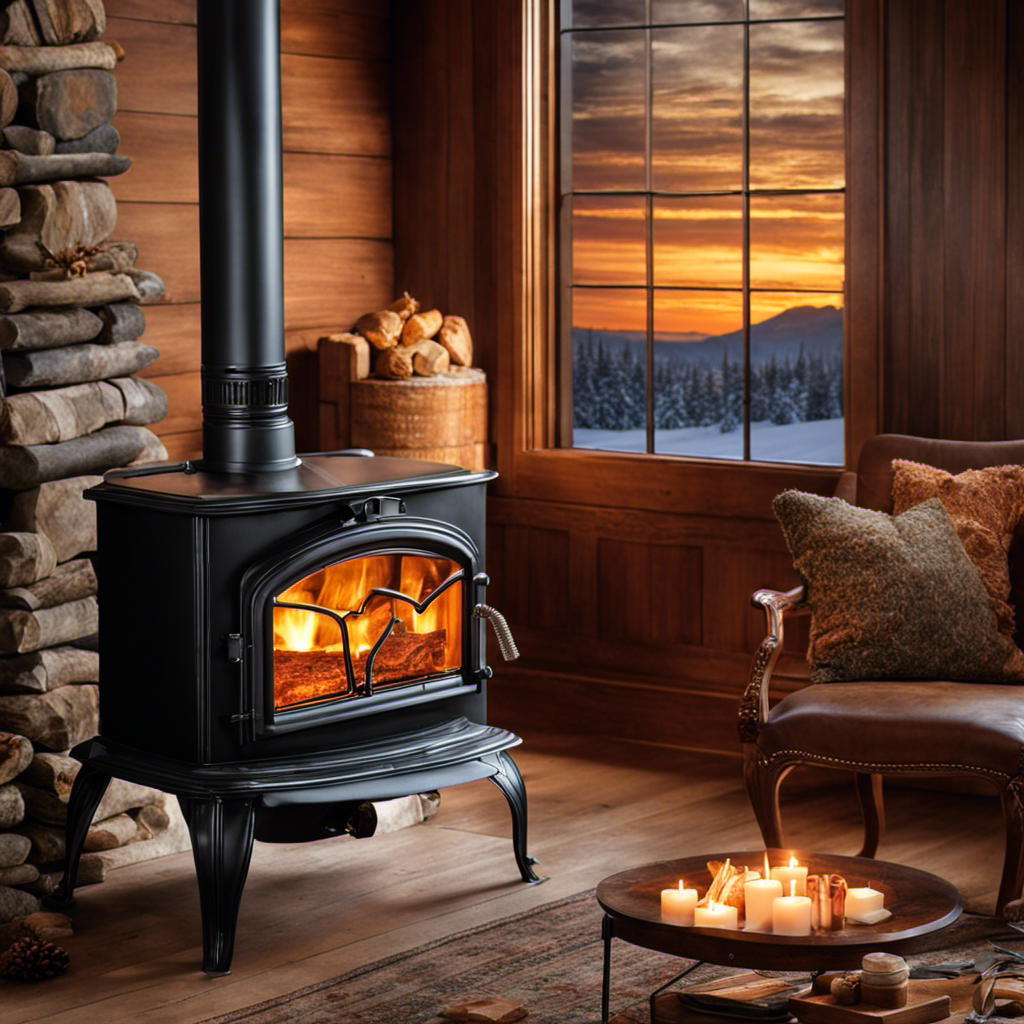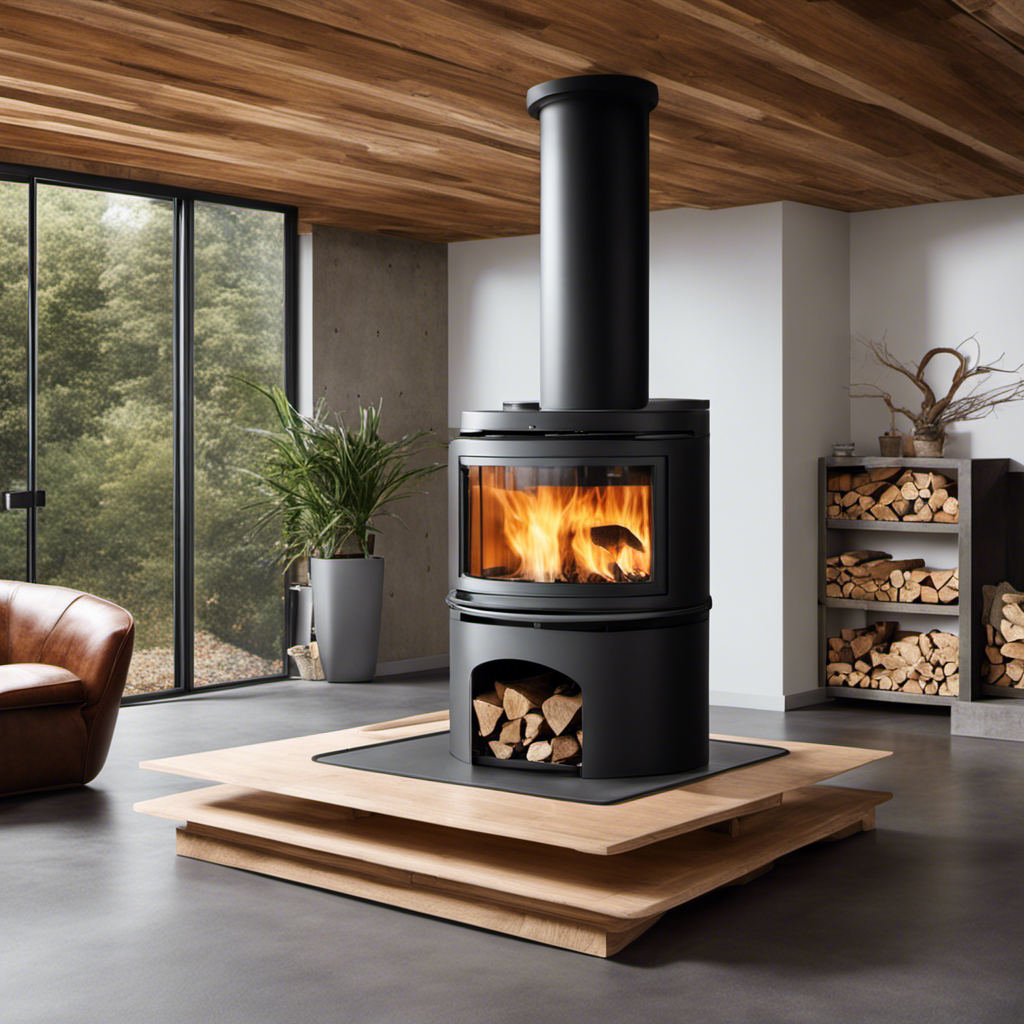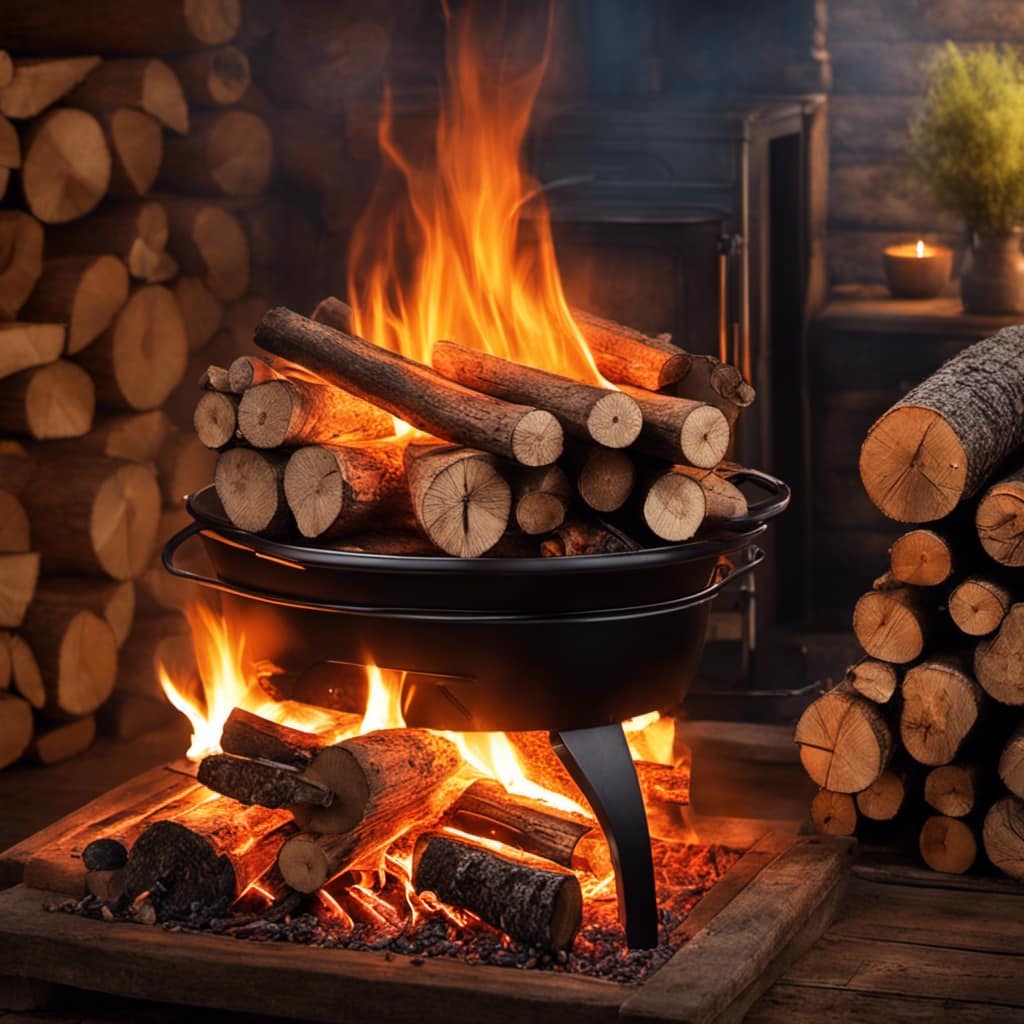Sitting beside the warm, flickering embers, I find myself enveloped by a sense of serenity and comfort. Yet, I wonder, could there be a method to extend this soothing sensation even further?
In this article, I will share with you some simple yet effective tips on how to make your wood stove burn longer.
By choosing the right wood, stacking it properly, controlling airflow, and maintaining your stove, you can enjoy extended hours of toasty goodness.
Let’s dive in and discover the secrets to a longer-lasting fire.
Key Takeaways
- Seasoned hardwood burns more efficiently and for a longer duration compared to softwood.
- Properly stacking and arranging wood, including creating a hot coal bed, helps maximize burn time and heat output.
- Controlling airflow through the use of the damper and damper regulator extends the burn time of a wood stove.
- Using firebricks inside the wood stove retains and radiates heat, increasing overall stove efficiency.
Choosing the Right Wood for a Longer Burn
I can make my wood stove burn longer by choosing the right wood. When it comes to wood for a longer burn, seasoned wood is the way to go. Seasoned wood has been properly dried and contains less moisture, allowing it to burn more efficiently and produce more heat. Green wood, on the other hand, contains a higher moisture content and won’t burn as long or as efficiently.
In terms of hardwood versus softwood, hardwood is the better choice for a longer burn. Hardwoods like oak, maple, and birch are denser and have a higher energy content, which means they’ll burn slower and produce more heat over a longer period of time compared to softwoods like pine or fir.
By selecting seasoned hardwood, I can ensure that my wood stove burns longer and provides consistent heat.
Now, let’s move on to the next topic and discuss how to properly stack and arrange wood for maximum efficiency.
Properly Stacking and Arranging Wood for Maximum Efficiency
Maximizing efficiency when stacking and arranging wood involves strategic placement and organization to ensure optimal airflow and combustion.
One important aspect to consider is using insulating materials to enhance heat retention. Insulating materials, such as fire bricks or refractory cement, can be placed at the back and sides of the wood stove to reflect heat back into the firebox, preventing heat loss through the walls. This helps to maintain a higher temperature and prolong the burn time.
Additionally, creating a hot coal bed is crucial for a longer burn. Start by placing smaller pieces of wood at the bottom, followed by larger logs on top. As the fire burns, the smaller pieces will turn into hot coals, providing a steady source of heat and reducing the need for constant refueling. Regularly adding smaller logs or splitting larger ones can help maintain a consistent coal bed.
Controlling Airflow to Extend Burn Time
To effectively extend the burn time of a wood stove, it’s essential to carefully control the airflow by adjusting the damper and using a coordinating conjunction. Adjusting dampers for better airflow control is crucial in maximizing the efficiency of your wood stove.
The damper is a device used to regulate the amount of air entering the stove, which directly affects the combustion process. By adjusting the damper, you can increase or decrease the amount of oxygen available for burning, thus controlling the intensity and duration of the fire.
Additionally, using a damper regulator can further increase burn time. A damper regulator is a tool that allows you to fine-tune the amount of air flowing into the stove, providing even more control over the burn rate.
Using Firebricks to Retain and Radiate Heat
By placing firebricks inside the wood stove, I can effectively retain and radiate heat, which helps to increase the overall efficiency of the stove. Firebrick insulation is a popular method used by many wood stove owners to maximize heat output and burn time. These specially designed bricks are made from refractory materials that can withstand high temperatures and are excellent at absorbing and storing heat. When placed inside the stove, they create a barrier that prevents heat from escaping through the walls, directing it back into the room. This not only keeps the room warmer for longer but also reduces the amount of fuel needed to maintain a comfortable temperature. Firebricks also help to evenly distribute heat by radiating it into the surrounding environment. This means that even after the fire has died down, the bricks will continue to emit heat, keeping the room cozy. Incorporating firebrick insulation into a wood stove is a simple and cost-effective way to improve its performance and make it more energy-efficient.
| Benefits of Firebrick Insulation | ||
|---|---|---|
| Increased heat retention | Reduced fuel consumption | Longer burn time |
| Enhanced heat distribution | Improved energy efficiency |
Alternative fuel sources, such as pellets or coal, can also be used in conjunction with firebrick insulation to further extend burn time and maximize heat output. These fuels have higher energy densities compared to traditional firewood, meaning they produce more heat per unit of fuel. By using them in combination with firebricks, you can create a highly efficient heating system that requires less frequent refueling. It’s important to note that not all wood stoves are suitable for alternative fuel sources, so be sure to check the manufacturer’s recommendations before making any changes. Overall, incorporating firebrick insulation and exploring alternative fuel sources are effective strategies for prolonging burn time and optimizing the performance of your wood stove.
Regular Maintenance and Cleaning for Optimal Performance
I always make sure to regularly clean out the ashes and sweep the chimney to ensure optimal performance of my wood stove. Maintaining chimney cleanliness is crucial for the efficient and safe operation of a wood stove.
In addition to cleaning, adjusting damper settings can also play a significant role in improving the burn time of the fire. Here are some tips to make your wood stove burn longer:
- Use seasoned firewood: Dry firewood burns more efficiently and produces less smoke.
- Build a small, hot fire: A smaller fire burns longer and requires less fuel.
- Adjust the damper: Opening the damper allows for more air, resulting in a hotter and longer-lasting fire.
- Use a fireplace insert: Installing an insert can increase the efficiency of your wood stove, allowing for longer burn times.
Frequently Asked Questions
How Long Does a Wood Stove Typically Burn Before Needing to Be Refueled?
A wood stove typically burns for several hours before needing to be refueled. However, there are various factors that can affect its burn time. Let me share some tips for maximizing burn time in a wood stove and discuss the factors that influence it.
Can I Use Any Type of Wood in a Wood Stove, or Are There Specific Types That Burn Longer?
Using specific types of wood in a wood stove can help it burn longer. Hardwoods like oak, maple, and birch have higher energy content and burn slower. They also produce less smoke and creosote buildup.
Is It Necessary to Use Firebricks in a Wood Stove, or Are There Alternative Methods to Retain and Radiate Heat?
Using insulating materials like firebricks in a wood stove can help retain and radiate heat more efficiently. However, there are alternative methods such as using heat-resistant ceramics or refractory cement to achieve similar results.
Are There Any Safety Precautions I Should Take When Controlling the Airflow to Extend Burn Time?
When it comes to controlling airflow in a wood stove, safety precautions are crucial. It’s important to remember to never leave the stove unattended and to use caution when adjusting the airflow to extend burn time.
How Often Should I Clean and Maintain My Wood Stove for Optimal Performance?
I clean and maintain my wood stove for optimal performance by following a regular cleaning schedule. This ensures that it functions efficiently and minimizes any potential issues. Cleaning frequency is key for optimal maintenance.
Conclusion
So, there you have it – a few simple tips to help you make your wood stove burn longer.
While some may argue that these methods require extra effort and attention, the reward of a longer burn time and increased efficiency is well worth it.
By choosing the right wood, properly arranging it, controlling airflow, and maintaining your stove, you can enjoy a cozy and warm atmosphere for longer periods.
Don’t let the fear of a shorter burn time deter you – with these techniques, you can maximize the benefits of your wood stove.

